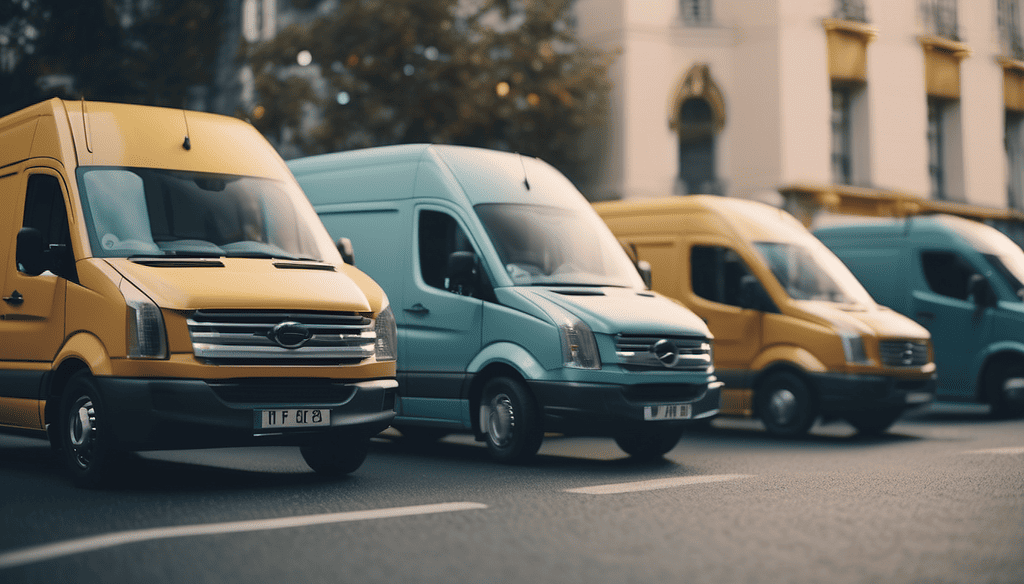The Challenge of Standardization in Connected Mobility: Implications for Interoperability and Collaboration
In the ever-evolving landscape of connected mobility, where innovation is paramount, a pressing challenge looms large—the lack of standardization. As the industry races toward a future dominated by electric vehicles, autonomous transportation, and smart infrastructure, the absence of standardized communication protocols and technologies poses a formidable hurdle. This deficiency threatens to impede the seamless interoperability and collaboration necessary for the realization of a truly connected and efficient mobility ecosystem.
The Complex Tapestry of Connected Mobility
Connected mobility, a domain encompassing electric vehicles, autonomous transportation, and intelligent infrastructure, is marked by a dizzying array of technologies and systems. Each segment of the industry operates with its own set of communication protocols, data formats, and connectivity standards. From electric vehicle charging stations to autonomous vehicle navigation systems, the lack of a unified language impedes the smooth exchange of information and coordination between different components.
The Struggle for Interoperability
Interoperability, the ability of diverse systems to work together seamlessly, is a cornerstone of efficient and user-friendly connected mobility. However, the absence of standardized communication protocols complicates this ideal. Electric vehicle manufacturers may use different communication standards for charging infrastructure, creating compatibility issues. Autonomous vehicles may struggle to communicate effectively with smart city infrastructure, leading to inefficiencies and potential safety concerns.
The struggle for interoperability extends beyond vehicles. Consider the scenario where a mobility-as-a-service platform aims to integrate data from various sources—electric vehicle providers, ride-sharing services, and public transportation systems. Without standardized protocols, this becomes a herculean task, requiring extensive customization, resources, and time.
The Ripple Effect on Collaboration
Collaboration is a linchpin in the connected mobility sector, fostering innovation and holistic solutions. The absence of standardization, however, introduces friction into collaborative efforts. Industry stakeholders—ranging from automakers and technology providers to urban planners and regulatory bodies—find themselves entangled in a web of incompatible systems.
Consider a case where a smart city initiative seeks to deploy connected infrastructure to optimize traffic flow and reduce emissions. The lack of standardized communication protocols may result in a disjointed integration with existing transportation systems. This not only hampers the effectiveness of the initiative but also discourages future collaborative endeavors.
The Call for Standardization
Recognizing the urgency of the situation, industry leaders, policymakers, and standardization bodies are beginning to rally for a unified approach. A standardized framework for communication protocols, data formats, and connectivity standards is seen as the key to unlocking the full potential of connected mobility.
The Role of Industry Leaders
Major players in the connected mobility space have a pivotal role to play in driving standardization efforts. Electric vehicle manufacturers, for instance, must collaborate to establish common charging protocols. Autonomous vehicle developers should work towards a shared language for vehicle-to-vehicle (V2V) and vehicle-to-infrastructure (V2I) communication.
Policymaker Intervention
Government bodies and regulatory authorities also have a crucial role in fostering standardization. By establishing frameworks and mandating adherence to common standards, policymakers can incentivize industry players to align their technologies, ensuring a more cohesive and interoperable connected mobility ecosystem.
Standardization Bodies as Catalysts
Existing standardization bodies, such as the International Electrotechnical Commission (IEC) and the Institute of Electrical and Electronics Engineers (IEEE), can act as catalysts for change. These organizations can convene industry stakeholders, facilitate dialogue, and establish consensus on common standards that transcend individual business interests.
The Path Forward: Challenges and Opportunities
While the path to standardization in connected mobility is fraught with challenges, it is also laden with opportunities for transformative change. Stakeholders must confront hurdles such as differing business interests, competitive dynamics, and the fast-paced nature of technological advancements.
Overcoming Business Interests
Competing business interests often hinder collaboration and standardization efforts. Electric vehicle manufacturers may be hesitant to adopt common charging protocols if they perceive a threat to their proprietary technologies. Addressing this challenge requires industry leaders to recognize the long-term benefits of standardization—enhanced market growth, increased consumer confidence, and streamlined operations.
Competitive Dynamics
The competitive nature of the connected mobility industry can foster innovation but may hinder collaboration. Fear of losing a competitive edge can lead companies to resist standardization. However, a paradigm shift is needed, with stakeholders understanding that collaboration on foundational standards can pave the way for differentiation in other areas of innovation.
Rapid Technological Advancements
The rapid pace of technological advancements adds another layer of complexity. As new technologies emerge, standardization efforts must remain agile to incorporate innovations without sacrificing the stability of established frameworks. This requires a dynamic and iterative approach to standardization that accommodates the evolving nature of connected mobility.
The Global Imperative
Standardization in connected mobility is not a local concern—it is a global imperative. As the industry transcends borders, a fragmented approach to communication protocols and technologies stifles international collaboration and hampers the realization of a truly interconnected world of mobility.
Lessons from Other Industries
Looking to other industries that have successfully navigated standardization challenges can provide valuable insights. The telecommunications industry, for example, overcame similar obstacles to establish global standards for cellular communication. The connected mobility sector can draw inspiration from these successes and tailor solutions to its unique challenges.
Establishing a Global Consortium
The creation of a global consortium, bringing together industry leaders, standardization bodies, and policymakers from around the world, could provide a platform for driving international standardization efforts. Such a consortium could facilitate dialogue, share best practices, and establish a roadmap for the adoption of common standards.
The Future: A Connected Mobility Ecosystem
In envisioning the future of connected mobility, the importance of standardization cannot be overstated. A seamless, interoperable ecosystem relies on a shared language that allows electric vehicles, autonomous systems, smart infrastructure, and mobility services to communicate effortlessly.
As industry stakeholders come to the realization that the benefits of standardization far outweigh short-term competitive concerns, the connected mobility sector is poised for a transformation. A standardized framework will not only enhance interoperability and collaboration but also lay the foundation for unprecedented innovation and growth.
The race toward a standardized connected mobility ecosystem is not merely a technical challenge—it is a strategic imperative. The industry must unite, transcending individual interests, to forge a future where connected mobility is truly connected, efficient, and accessible to all.
In the crucible of standardization, the future of connected mobility awaits, promising a revolution in the way we move, connect, and experience the world. The time to act is now.




